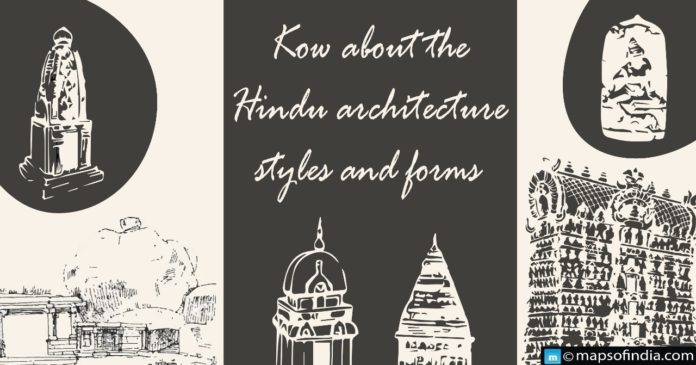A temple is a place where people gather to worship. However, we tend to overlook that temples are far more than that. Their social roles extend beyond their religious significance. Throughout India, we may see a variety of Hindu temples moving around. However, it is amazing to learn that constructing a temple was not simple.
Humans didn’t have much of a religious foundation as far back as the Harappan Civilization in India. In some instances, such as the “Great Bath,” these structures are thought to be used for religious purposes. Yagya and rituals have grown in importance since the Vedic Age, as have religious constructions.
Let’s take a look at all the different styles and forms of Hindu temple architecture existing for ages:
- The Nagara
Hindu temples in northern India began to build in the Nagara style around the 5th century AD. The Panchayatana style has a significant influence on this kind of temple construction. Sun temple in Konark, Odisha, Modera sun temple at Gujrat, etc., are some examples of Nagara temples.
- Dravida
In South India, this kind of temple architecture is expected. South Indian Chola rulers were known to send their children to this institution. The Nagara and Dravida architectural schools are distinct in two ways.
High boundary walls are a feature of the Dravida architecture school, although they are absent from the Nagara school. Gopurams, or temple entryways, are a common element in Dravida temples. Brihadeswara temple, Gaikondacholapuram temple, etc., are examples.
- Nayaka University of Technology
This school flourished in the 16th to 18th century AD under the Nayaka rulers. The Madurai school is another name for it. The Dravidian style is akin to this one, but the Islamic influence is evident. The Meenakshi temple in Madurai is an example of a Nayaka school structure.
- Vesara
The Vesara style of Hindu temple design, also referred to as the Karnataka school, combines elements from the Nagara and Dravida schools. So it’s also known as the Hybrid style, which is what it is. It has been discovered in the heart of India. This form of temple architecture was favoured by dynasties such as Rastrakuta, Chalukya, Hoysala, and others. For instance, the temples at Badami and Aihole’s Lakhan Temple.
- The Vijayanagara
The Vijayanagara rulers, who ruled from 1335 until 1565 AD, built several religious structures at Hampi. As a result, the temples they supported were part of this architectural style. The concept of secular buildings inside the main temple, where much social activity took place, was crucial to their architectural design. The Vijayanagara school is well-represented in Hampi’s Virupaksha temple.
- Pala and Sena
The Bengal region is home to the Pala and Sena schools of Hindu temple construction. It resembles Odisha school quite a bit. As its name suggests, emperors of the Pala dynasties patronized it in the 12th century. It also has a Buddhist temple-style construction. For example, Pala school temples may be found all over the Vishnupur area.




